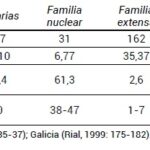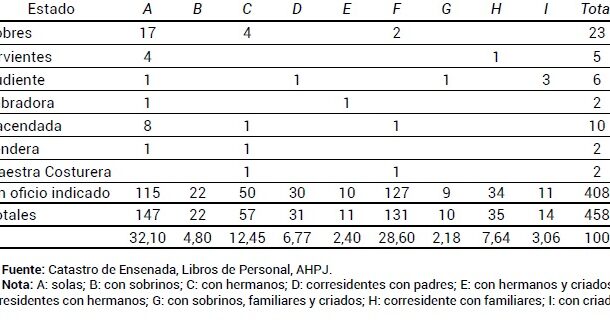
In central-southern Castile, the nuclear family predominated and exceeded 80% of the family nuclei. With the departure of this traditional model in the absence of the parents, unstructured households were generated in which single siblings and relatives lived together; on the other hand, complex or extended households in which family members cohabited in the same nucleus together with uncles, nephews, nieces or servants. Loneliness linked to the family nucleus and residence was related to middle-aged women being single, but the existence of young women who lived alone due to the loss of one of their parents was also observed. In Jaén, one in three single women lived alone (32.10%). When they did not live their lives alone, one in four headed unstructured households in which they took care of their younger siblings and/or nieces and nephews. In single-parent households, the extended family model predominated, which occurred when a close relative was integrated into the family nucleus through solidarity networks (35.37%). In turn, 6.77% of those of middle or old age remained living together with their parents in a nuclear model.
Collection: Statistics
Project: 3. Rural world and urban world in the formation of the European identity., 4. Family, daily life and social inequality in Europe.
Chronology: XVIII
Scope: Secondary Education, Baccalaureate, University
Link: https://adeh.org/wp-content/uploads/2020/09/ADEH-2020-7-Raquel-Tovar-Pulido.pdf
Resource type: Statistics
Format: Table
Source: Tovar Pulido, Raquel, «Mujeres solteras e independientes en la España del siglo XVIII: rentas familiares y gestión patrimonial en el mediodía peninsular», Revista de Demografía Histórica, vol. 38, nº1, 2020, pp. 149–176.
Language: Spanish
Date: 2020
Owner: Álvaro Romero González (Modernalia)
Copyright: Raquel Tovar Pulido, Revista de Demografía Histórica
Abstract: Women as the head of the family in 18th-century Spain
Image
Tags







